ObsoLEED?
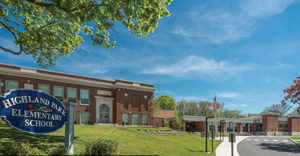
PHOTOS COURTESY OF MOSER PILON NELSON ARCHITECTS
As befits its acronym, LEED has helped lead the way toward a higher level of sustainability in architecture by becoming both a codification of smart, sensitive design and a marketable commodity. LEED isn’t always easy to justify to clients — the costs associated with it are not insignificant — but it has been embraced as the de facto standard in large part because its precepts and its four levels of attainment (Certified, Silver, Gold, Platinum) are easy to understand.
But a funny thing is happening — architects, contractors and manufacturers have adapted so quickly to sustainable practices that many of the actions for which projects can accrue LEED points, such as the specification of recycled products and construction waste management, are nearly universally applied, making LEED Certified and Silver well within reach of anyone who wants to spend the money to get a LEED plaque. This has lowered the cachet (thus, the marketability) of these LEED levels, and recently led to one high-profile adjustment — the U.S. General Services Administration last year increased its minimum requirement for new construction and substantial renovation of federally owned facilities from LEED Silver to LEED Gold.
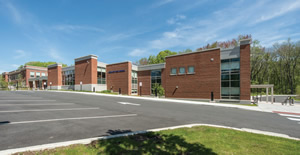
PHOTOS COURTESY OF MOSER PILON NELSON ARCHITECTS
Few such adjustments have occurred at the state level, where for most of the century’s first decade, tremendous progress was made in advancing the cause of sustainable design practices in schools and other state-funded buildings. State governments or agencies in a minimum of 17 jurisdictions either passed legislation, adopted green building standards, issued executive orders, passed resolutions, provided incentives or published voluntary guidelines that sought to establish a standard for high performance. (The Washington, D.C.-based Environmental Law Institute says its count is by no means complete, given the likelihood that cities and municipalities could have passed similar regulations out of the glare of the national spotlight.)
While the past two years have seen the rise of two competing standards — the International Green Construction Code, published in March 2012, and the Green Building Institute’s Green Globes, which were first made available in the U.S. in 2005 but received a boost when the GSA announced in 2013 that federal agencies could now use either LEED or Green Globes as their certification system — LEED remains on top.
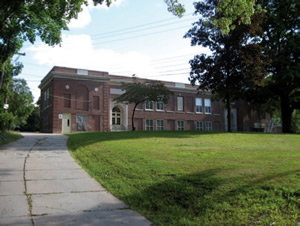
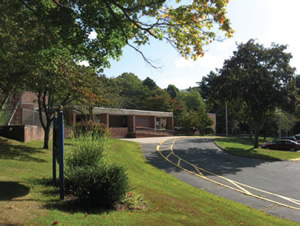
PHOTOS COURTESY OF MOSER PILON NELSON ARCHITECTS
Same But Different? Moser Pilon Nelson’s 2011-12 renovation of and addition to Highland Park Elementary School in Manchester, Conn., was one of the first building projects to meet the state’s high-performance standards, which have many of the same elements as LEED. Connecticut’s requirements are much more tied to the design of the building and its building envelope and mechanical systems, as well as a higher level of verification through commissioning.
Arizona, California, Colorado, Connecticut, District of Columbia, Florida, Hawaii, Illinois, Kentucky, Maryland, Massachusetts, New Jersey, New York, Ohio, Oregon, Rhode Island and Washington have in one way or another adopted LEED criteria, and most have set Silver (as well as, more recently, “a comparable rating of another nationally recognized standard approved by the state”) as the minimum standard.
In a typical early example, the Kentucky Cabinet put forth regulations “establishing LEED as the standard,” according to the Environmental Law Institute, “requiring projects that cost $25 million or more to achieve LEED Silver certification, projects between $5 million and $25 million to achieve LEED Certified certification, and projects under $5 million to use LEED criteria as a guide.” Ohio, which may have been more prescient, established (through a resolution of the Ohio School Facilities Commission) the LEED Silver criteria as the standard and Gold as the goal “for projects participating in the OSFC’s programs.” Similar to this, Washington, D.C., recently amended its original statute (which specified Silver) to direct schools to “aspire” to meet LEED Gold and to require schools to attain Gold or Platinum if sufficient funding is provided to do so. These latter two jurisdictions’ reliance on hopeful language (rather than on mandates) shows that the high-performance schools movement hasn’t yet caught up with the design, construction and manufacturing communities.
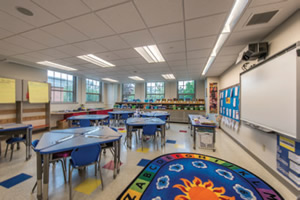
Leading by example
Legislation passed by Connecticut in 2007 at first glance doesn’t stand out from the pack. The law, which became effective in January 2008, directed the state to develop standards consistent with LEED Silver (or a comparable standard). From there, however, the eventual high performance school building standards went beyond LEED in several critical respects. Tobie Bernstein, senior attorney at the Environmental Law Institute, singles Connecticut out as being “ahead of the curve” in both its writing of more stringent standards and in its administration of construction and renovation projects.
Projects receiving more than $2 million for renovation or $5 million for new construction in state funding that meet certain thresholds in terms of scope and total cost must meet the new standards, which in the case of schools consist of 18 mandatory requirements plus a minimum of 28 of the 59 optional strategies separated, as with LEED, into different categories. It is so LEEDlike, in fact, that a second way to comply with the state’s high-performance guidelines is to meet the mandatory requirements and then, in lieu of working through the optional items, get the building certified as LEED Silver. (A third method is to, secondarily, meet the criteria of the Northeast Collaborative for High Performance Schools.)
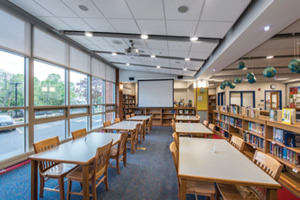
But the standards are called “high performance” for a reason — there is much more of a focus on increasing the energy performance of the building in question than on putting in bamboo floors and placing signs reserving preferred parking spaces for low-emitting and fuel-efficient vehicles, which both standards accommodate. A new or renovated building compliant with Connecticut’s high-performance standards has to be shown through energy modeling (similar to LEED) to exceed state codes or a baseline building performance rating (i.e., ASHRAE 90.1), whichever is greater, by 21 percent — whereas LEED’s minimum benchmark is 10 percent better than the ASHRAE Standard for new construction and just 5 percent for a renovation project.

To be able to document this energy performance requires third-party commissioning (Cx), which is also one of the requirements of LEED. But again, Connecticut goes further — the base requirement under high performance exceeds even the enhanced Cx credit under LEED. Getting LEED Cx doesn’t require a certified commissioning authority; Connecticut requires a certified authority that is also licensed as a professional engineer. Whereas LEED commissioning requires the review of the Owner’s Project Requirements, Connecticut’s high-performance commissioning requires that the authority assist in the OPR’s development and (LEED is silent on this) participate in the collaborative design process. While the differences in Connecticut’s high-performance requirements and LEED’s are often indistinguishable or insignificant, these represent a major difference, and in the context of a whole building performing over many years, these can represent a very significant separation in performance.
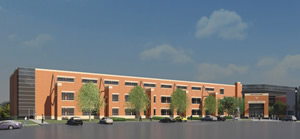
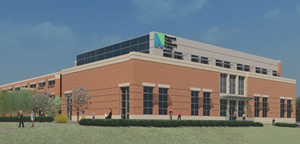
RENDERINGS COURTESY OF NAUGATUCK
Moser Pilon Nelson’s 2011-12 renovation of and addition to Highland Park Elementary School in Manchester, Conn., was one of the first building projects to meet the state’s high-performance standards, and we saw firsthand the state’s more commonsense approach. It has many of the same elements as LEED, and owners can feel good about how many sustainable materials have been specified for the building, for example.
Beyond that, Connecticut’s requirements are much more tied to the design of the building and its building envelope and mechanical systems, as well as a higher level of verification through commissioning. The end result should be a building that performs better.
Higher power
It’s possible that the states that have tied their green efforts to LEED Silver will abandon it for a higher minimum standard, but momentum on the legislative front has slowed considerably, probably due to the ongoing recession. A few states — again, Connecticut turns up high on this list — have made organizational changes that should simplify code rewrites where school construction and sustainability intersect. In Connecticut’s case, the newly created (in 2011) Division of Construction Services consolidated various disciplines: The Bureau of Design and Construction, which had been a division of the Department of Public Works; the Bureau of School Facilities, which was in the State Department of Education; and the Division of Fire and Building Services, which was in the Department of Public Safety. Then, in 2013, the DCS was folded into the Department of Administrative Services. These moves put construction services and code writing under the same umbrella, allowing for a more seamless authority.
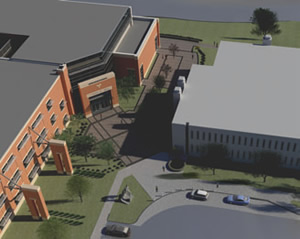
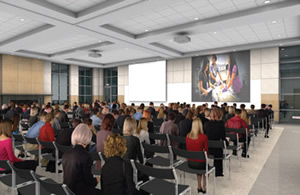
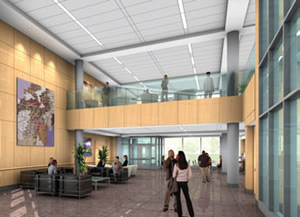
RENDERINGS COURTESY OF NAUGATUCK
More green? The planning of an 80,000-square-foot project similar to Highland Park — located on a community college campus, which will involve the demolition of a building wing, the gut renovation of the main portion and a new building addition — has taken place with the knowledge that the client will pursue LEED in addition to the project meeting the high-performance standards. Should the client pursue LEED Gold or Platinum, there may be significant added cost.
Even in a state where high-performance requirements make lower levels of LEED somewhat superfluous, the majority of owners won’t abandon LEED. Our planning on an 80,000-square-foot project similar to Highland Park — located on a community college campus, the project will involve the demolition of a building wing, the gut renovation of the main portion and a new building addition — has taken place with the knowledge that the client will pursue LEED in addition to the project meeting the high-performance standards. Should the client pursue LEED Gold or Platinum, there may be significant added cost — Platinum in particular may result in the addition of big-ticket items such as solar power, green roofs and geothermal heating systems — but plenty of marketing power, too.
While its influence may at this moment appear to be on the wane, the U.S. Green Building Council has a history of responding quickly to such challenges by making changes to LEED and by adding new ways to achieve sustainability. Should this circumstance play out in similar fashion, the USGBC will once again be able to claim the mantle of leadership, with the states following in its wake.
This article originally appeared in the issue of .